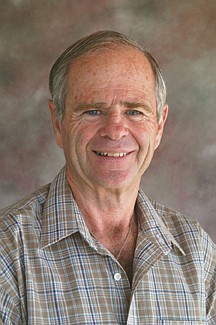 Facebook
Facebook
 X
X
 Instagram
Instagram
 TikTok
TikTok
 Youtube
Youtube

San Diego Gas & Electric hates the Jacksonville Electric Authority (JEA). That’s because the Jacksonville utility publishes the quarterly JEA residential rate survey, which reveals the rates charged by the nation’s electric utilities. San Diego’s local utility generally has the nation’s highest prices. When it’s not in first place, as usual, it’s always among the five highest.
SDG&E often has the highest rates by a wide margin. For example, in the first quarter of this year, the cost for 1000 kilowatt-hours at San Diego Gas was $272.02. The second highest was $202.81. Seven years ago, the local utility was first at $211.52 and the second highest was $157.28.
Last year, Richard Rider, chairman of San Diego Tax Fighters, looked at one of the JEA residential rate surveys. “San Diego Gas & Electric residential rates are 62 percent higher than the median-priced utility in the survey,” complained Rider. That quarter was one of the few times that San Diego Gas’s rates were only the fourth highest in the nation.





SDG&E’s extraordinarily high rates contribute greatly to the profit and stock performance of its parent, Sempra Energy. San Diego Gas’s profits make up more than half of Sempra’s. In the annual report for 2012, Sempra chief executive Debra L. Reed boasts, “We were the top-performing stock in our sector and generated a total shareholder return [stock-price increase plus dividends] of 34 percent, compared with 1 percent for the [Standard & Poor’s] Utilities Index.… Over the past decade, our total return has been 305 percent, nearly double the total return of the [Standard & Poor’s] Utilities Index” and triple the return of the general market.
Nonetheless, SDG&E regularly goes to the California Public Utilities Commission and pleads poverty. And gets away with it. For example, in late March, a commission administrative law judge decided, after extensive hearings, to increase rates; if the full commission agrees, an all-electric SDG&E customer using 500 kilowatt-hours per month will see rates rise 7.7 percent, or $6.55 monthly.
For all these years of lofty San Diego Gas rates, the so-called watchdog, Utility Consumers’ Action Network (UCAN), hasn’t sufficiently countered the utility’s poor-mouth pleadings. Some say it is not for lack of trying, and others say it is. Like other interested parties that enter into commission hearings over utility rates, the watchdog group greatly lives off intervenor fees, or money that is paid to those who contribute substantially to commission decisions.
And that’s the rub. The commission decides whose contribution is substantial and whose isn’t. And without question, a symbiotic — some would say cozy — relationship has evolved. The commission, by controlling intervenor awards, makes sure (particularly under current president Michael Peevey) that those who ask penetrating questions don’t get paid.
An organization participating in a commission decision “lives or dies by intervenor compensation,” says Bill Powers of San Diego’s Powers Engineering. Therefore, the commission “has you on a leash.” Intervenors become resigned to “fighting at the margins, not challenging the basic premise — and [the commission’s] basic premise is to make sure that the revenue of utilities is ever increasing.”
Niel Lynch, emeritus UCAN board member, says the commission has “used intervenor fees to bludgeon well-intentioned individuals who try to raise issues that the commission as presently composed doesn’t want to hear. The commission is kind of a private club. It doesn’t want people rocking the boat.”
Yes, don’t rock the commission’s love boat. A classic example of that advice came in the recent battle over San Diego Gas & Electric’s attempt to get ratepayers to pick up the tab for uninsured costs of the 2007 fires for which the utility was found to be greatly responsible. Attorney Mike Aguirre battled hard to make sure San Diegans didn’t get stuck with the bill. Aguirre requested intervenor fees. On March 18, 2011, Michael Shames, the since-defrocked head of Utility Consumers’ Action Network, protested. Among several things, Shames complained that Aguirre didn’t “adhere to the rules and customs of the commission.” Aguirre’s actions were “outside customary conduct.”
Three days later, San Diego Gas & Electric echoed Shames’s objections. Aguirre was “belligerent and disrespectful to the commission,” whined the utility.
On April 18, 2011, Shames asked the commission to sanction Aguirre, who did not “maintain the respect due to the commission.” Four days later, San Diego Gas & Electric told the commission that it agreed with Shames. The utility flayed Aguirre for “deliberate disregard for the commission’s rules.” In this case, SDG&E and Shames failed in their effort: Aguirre was not sanctioned.
The second phase of the hearings was a victory for San Diegans: thanks greatly to Aguirre’s aggressiveness, the commission did not give San Diego Gas the ability to fleece its ratepayers. But late last month, the utility was at it again, wanting Aguirre’s intervenor fees denied. The utility complained of “semantic grandiosity” and disrespect for commission “jurisdiction and processes.” Among many things, Aguirre’s rebuttal noted that his side had won.
Says Aguirre, “It’s like putting up a sign saying ‘Aggressive Advocates Not Wanted Here.’ [SDG&E] painted the sign and Shames planted it. The [commission] was in on it as well.”
Looking at San Diego Gas’s consistently high rates and the watchdog’s inability to rein them in, David Peffer, the watchdog whistleblower who recently resigned, observes, “It’s clear from the record that Shames is incredibly successful at getting intervenor compensation, but it is not clear how successful he was as an advocate” for San Diego’s beleaguered ratepayers.
Emeritus board member Lynch points out that in early UCAN days, the utility fought the watchdog’s intervenor requests and initiatives tooth and nail. Later, San Diego Gas wasn’t fighting. “Some people wondered if there wasn’t too cozy a relationship between Shames and SDG&E,” says Lynch.
Peffer notes that if the utility was not opposing Shames aggressively at every opportunity, it possibly didn’t “view him as a threat.”
Powers disagrees with this criticism of Shames, and so, of course, does Shames: any charges that he has been cozy with SDG&E are “undiluted toxic hogwash,” he says.


San Diego Gas & Electric hates the Jacksonville Electric Authority (JEA). That’s because the Jacksonville utility publishes the quarterly JEA residential rate survey, which reveals the rates charged by the nation’s electric utilities. San Diego’s local utility generally has the nation’s highest prices. When it’s not in first place, as usual, it’s always among the five highest.
SDG&E often has the highest rates by a wide margin. For example, in the first quarter of this year, the cost for 1000 kilowatt-hours at San Diego Gas was $272.02. The second highest was $202.81. Seven years ago, the local utility was first at $211.52 and the second highest was $157.28.
Last year, Richard Rider, chairman of San Diego Tax Fighters, looked at one of the JEA residential rate surveys. “San Diego Gas & Electric residential rates are 62 percent higher than the median-priced utility in the survey,” complained Rider. That quarter was one of the few times that San Diego Gas’s rates were only the fourth highest in the nation.





SDG&E’s extraordinarily high rates contribute greatly to the profit and stock performance of its parent, Sempra Energy. San Diego Gas’s profits make up more than half of Sempra’s. In the annual report for 2012, Sempra chief executive Debra L. Reed boasts, “We were the top-performing stock in our sector and generated a total shareholder return [stock-price increase plus dividends] of 34 percent, compared with 1 percent for the [Standard & Poor’s] Utilities Index.… Over the past decade, our total return has been 305 percent, nearly double the total return of the [Standard & Poor’s] Utilities Index” and triple the return of the general market.
Nonetheless, SDG&E regularly goes to the California Public Utilities Commission and pleads poverty. And gets away with it. For example, in late March, a commission administrative law judge decided, after extensive hearings, to increase rates; if the full commission agrees, an all-electric SDG&E customer using 500 kilowatt-hours per month will see rates rise 7.7 percent, or $6.55 monthly.
For all these years of lofty San Diego Gas rates, the so-called watchdog, Utility Consumers’ Action Network (UCAN), hasn’t sufficiently countered the utility’s poor-mouth pleadings. Some say it is not for lack of trying, and others say it is. Like other interested parties that enter into commission hearings over utility rates, the watchdog group greatly lives off intervenor fees, or money that is paid to those who contribute substantially to commission decisions.
And that’s the rub. The commission decides whose contribution is substantial and whose isn’t. And without question, a symbiotic — some would say cozy — relationship has evolved. The commission, by controlling intervenor awards, makes sure (particularly under current president Michael Peevey) that those who ask penetrating questions don’t get paid.
An organization participating in a commission decision “lives or dies by intervenor compensation,” says Bill Powers of San Diego’s Powers Engineering. Therefore, the commission “has you on a leash.” Intervenors become resigned to “fighting at the margins, not challenging the basic premise — and [the commission’s] basic premise is to make sure that the revenue of utilities is ever increasing.”
Niel Lynch, emeritus UCAN board member, says the commission has “used intervenor fees to bludgeon well-intentioned individuals who try to raise issues that the commission as presently composed doesn’t want to hear. The commission is kind of a private club. It doesn’t want people rocking the boat.”
Yes, don’t rock the commission’s love boat. A classic example of that advice came in the recent battle over San Diego Gas & Electric’s attempt to get ratepayers to pick up the tab for uninsured costs of the 2007 fires for which the utility was found to be greatly responsible. Attorney Mike Aguirre battled hard to make sure San Diegans didn’t get stuck with the bill. Aguirre requested intervenor fees. On March 18, 2011, Michael Shames, the since-defrocked head of Utility Consumers’ Action Network, protested. Among several things, Shames complained that Aguirre didn’t “adhere to the rules and customs of the commission.” Aguirre’s actions were “outside customary conduct.”
Three days later, San Diego Gas & Electric echoed Shames’s objections. Aguirre was “belligerent and disrespectful to the commission,” whined the utility.
On April 18, 2011, Shames asked the commission to sanction Aguirre, who did not “maintain the respect due to the commission.” Four days later, San Diego Gas & Electric told the commission that it agreed with Shames. The utility flayed Aguirre for “deliberate disregard for the commission’s rules.” In this case, SDG&E and Shames failed in their effort: Aguirre was not sanctioned.
The second phase of the hearings was a victory for San Diegans: thanks greatly to Aguirre’s aggressiveness, the commission did not give San Diego Gas the ability to fleece its ratepayers. But late last month, the utility was at it again, wanting Aguirre’s intervenor fees denied. The utility complained of “semantic grandiosity” and disrespect for commission “jurisdiction and processes.” Among many things, Aguirre’s rebuttal noted that his side had won.
Says Aguirre, “It’s like putting up a sign saying ‘Aggressive Advocates Not Wanted Here.’ [SDG&E] painted the sign and Shames planted it. The [commission] was in on it as well.”
Looking at San Diego Gas’s consistently high rates and the watchdog’s inability to rein them in, David Peffer, the watchdog whistleblower who recently resigned, observes, “It’s clear from the record that Shames is incredibly successful at getting intervenor compensation, but it is not clear how successful he was as an advocate” for San Diego’s beleaguered ratepayers.
Emeritus board member Lynch points out that in early UCAN days, the utility fought the watchdog’s intervenor requests and initiatives tooth and nail. Later, San Diego Gas wasn’t fighting. “Some people wondered if there wasn’t too cozy a relationship between Shames and SDG&E,” says Lynch.
Peffer notes that if the utility was not opposing Shames aggressively at every opportunity, it possibly didn’t “view him as a threat.”
Powers disagrees with this criticism of Shames, and so, of course, does Shames: any charges that he has been cozy with SDG&E are “undiluted toxic hogwash,” he says.
Comments